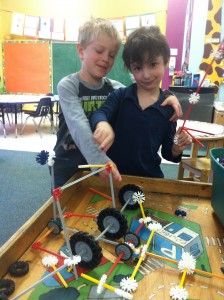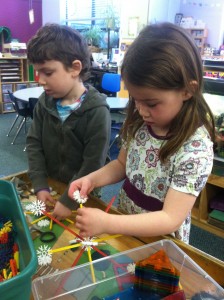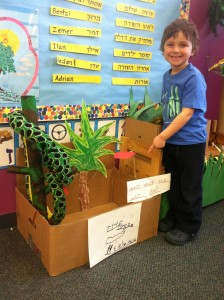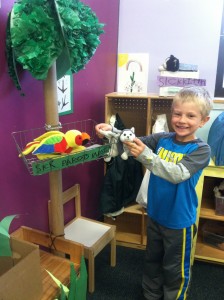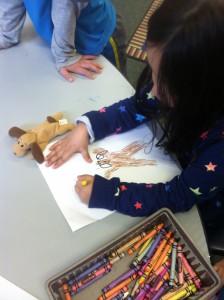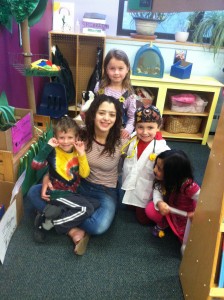We have been so engaged and productive since returning from our Passover break and are continuing to enthusiastically hone our creative and collaborative skills. For example, just today we worked together as a kehillah (yup – every person in our classroom – grown-ups and children alike!) at our train table, building underwater boats, magic freezing wands, and alligators!
We also recently decided to create a Veterinary Office in our Dramatic Play Area! We first looked at books and pictures of veterinary clinics. Many of us wanted to work with rainforest animals, so we further focused our research on tropical birds and reptiles. We then created signs for the clinic . . .
. . . and created crates, cages, trees, food . . . and even warming lights (for Herman the Worm, of course!)
In our clinic, we are taking care of sick parrots, snakes, a lizard, ducks, kittens and puppies. Our friends from home (including a turkey!) have also required check-ups from our many enthusiastic (yet gentle) veterinarians.
We even are sketching pictures of our sick animals – thereby sharpening our observation skills and our knowledge of dog anatomy!
Crystal, (our Met intern), will build upon our interests and is preparing to speak to us about animal safety and care. She will also be planning for an educator from the RISPCA (RI Society for the Prevention of Cruelty to Animals) to visit our classroom!
Our interest in the natural world and science isn’t limited to our Dramatic Play Area! We are also learning more about the rocks and minerals that are all around us. We discover them in our playground, our backyards, and at the seashore. And we also find them, of course, on our science table!
We have learned (while doing research and during our Circle Time conversations) that sand and crushed rocks are used to make gravel for driveways and concrete for our buildings. Stones like granite and marble are used for countertops, statues and to decorate buildings. We have discovered that human beings have used rocks for both decoration and tools for thousands of years: turquoise and amethysts adorn rings and necklaces; flint was used to make arrows; our strongest drill bits use diamonds. We have observed many of the rocks on our Science Table and documented our discoveries in our Science Journals. In addition, we are learning about the different components of rocks:
MINERALS are non-living compounds of elements that are found only in nature. They are the building blocks of rocks and can form crystals.
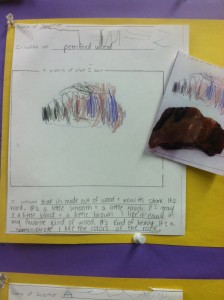
CRYSTALS are solid substances with atoms arranged in an orderly pattern which usually form smooth flat surfaces called faces.
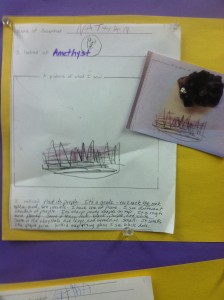
ROCKS are solid mixtures of one or more minerals. They make up the inorganic solid potion of the planet Earth.
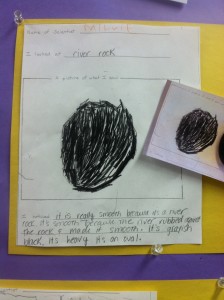
There are more than 1500 mineral species and over 100 kinds of rocks!
